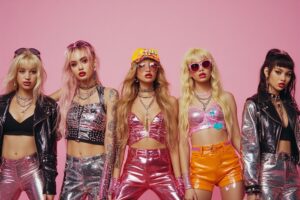
The Future of Hair Drying
Introduction
The hair drying industry is on the brink of a revolution. Forget bulky, noisy dryers that damage your locks. Instead, imagine sleek, smart devices that dry hair faster, protect its health, and reduce energy use. Consequently, advancements in technology are reshaping how we care for our hair. From ionic and infrared systems to AI-powered personalization, the future of hair drying promises efficiency and sustainability. In this article, we’ll explore these innovations, their benefits, and how they align with modern needs. So, let’s dive into what’s next for hair drying and why it matters.
Why Hair Drying Needs a Transformation
Hair drying has long been a staple in beauty routines. However, traditional dryers often cause more harm than good. High heat damages hair cuticles, leading to frizz and breakage. Moreover, they consume excessive energy, hiking electric bills and environmental impact. Today’s consumers demand better solutions. They want tools that prioritize hair health, speed, and eco-friendliness. As a result, manufacturers are rethinking designs to meet these needs. The future of hair drying lies in addressing these pain points with innovative technology. By focusing on efficiency and care, new dryers are set to redefine daily routines, making them faster, safer, and more sustainable for everyone.
The Role of Technology in Hair Drying
Ionic Technology: A Game-Changer
Ionic hair dryers are leading the charge in modern hair care. These devices emit negative ions, which break down water molecules for faster drying. Consequently, hair retains moisture, reducing frizz and enhancing shine. Unlike traditional dryers, ionic models minimize heat damage, preserving hair health. For instance, brands now integrate ionic technology into compact, lightweight designs. This makes them ideal for daily use. Additionally, they cater to various hair types, from curly to straight. As technology advances, ionic dryers are becoming more affordable, ensuring accessibility. Therefore, they’re a cornerstone of the future of hair drying, offering efficiency without compromising quality.
Infrared Heat: Gentle and Effective
Infrared hair dryers are another leap forward. Unlike conventional dryers, they use infrared waves to penetrate hair, drying it from the inside out. This reduces exposure to high temperatures, protecting delicate strands. Moreover, infrared technology speeds up drying time, saving energy. For example, some models combine infrared with ionic features for optimal results. As a result, users enjoy smoother, healthier hair with less effort. These dryers are particularly beneficial for those with thick or coarse hair. Looking ahead, infrared systems will likely become standard, as they align with the growing demand for gentle, efficient hair drying solutions.
Smart Hair Dryers: AI-Powered Precision
Smart hair dryers are redefining convenience. Equipped with AI, these devices analyze hair type and adjust settings automatically. For instance, sensors detect moisture levels, optimizing heat and airflow. Consequently, this prevents over-drying and damage. Some models even connect to apps, allowing users to customize settings or track hair health. Additionally, voice-activated controls are emerging, making operation hands-free. These innovations cater to busy lifestyles, offering personalized care. As AI technology evolves, smart dryers will become more intuitive, ensuring effortless routines. Therefore, the future of hair drying is not just efficient but also tailored to individual needs.
Sustainability in Hair Drying
Eco-Friendly Designs
Sustainability is a key focus in the future of hair drying. Traditional dryers consume significant energy, contributing to carbon footprints. However, new models prioritize eco-friendly materials and energy-efficient systems. For example, some brands use recyclable plastics and biodegradable components. Additionally, low-wattage motors reduce power consumption without sacrificing performance. These changes align with global efforts to combat climate change. Moreover, consumers are increasingly choosing sustainable products, driving demand. As a result, manufacturers are investing in green technology, ensuring hair dryers are both effective and environmentally responsible. This shift promises a greener future for beauty routines.
Solar-Powered and Cordless Options
The rise of cordless and solar-powered hair dryers is exciting. These devices offer portability, perfect for travel or outdoor use. For instance, solar-powered models harness renewable energy, reducing reliance on electricity. Meanwhile, cordless dryers use rechargeable batteries, providing flexibility without cords. Consequently, they’re ideal for small spaces or on-the-go styling. Although still in early stages, these innovations are gaining traction. As battery and solar technology improve, these dryers will become more powerful and accessible. Therefore, they represent a bold step toward sustainable, convenient hair drying solutions that meet modern demands.
Healthier Hair Through Innovation
Protecting Hair Health
Hair health is a top priority in the future of hair drying. Traditional dryers often cause split ends and dryness due to excessive heat. However, new technologies focus on protection. For example, ceramic coatings distribute heat evenly, reducing hot spots. Additionally, cool-shot features lock in moisture, enhancing shine. Some dryers also incorporate essential oil diffusers to nourish hair during drying. As a result, users experience less damage and healthier locks. These advancements cater to growing awareness of hair care. Consequently, the future of hair drying emphasizes not just speed but also long-term hair vitality.
Customizable Heat Settings
Customizable heat settings are transforming hair drying. Modern dryers offer multiple temperature options, catering to different hair types. For instance, fine hair requires lower heat to prevent damage, while thick hair needs higher settings for efficiency. Moreover, some models include scalp-care modes to avoid irritation. This personalization ensures optimal results for everyone. Additionally, digital displays make it easy to select precise settings. As technology advances, expect even more tailored options, like humidity-based adjustments. Therefore, customizable dryers are key to the future of hair drying, offering versatility and care for diverse needs.
The Impact of Design and Ergonomics
Lightweight and Compact Models
Design plays a huge role in the future of hair drying. Heavy, bulky dryers are becoming obsolete. Instead, lightweight, compact models are taking over. These are easier to handle, reducing wrist strain during use. For example, foldable handles make storage simple, ideal for small bathrooms. Additionally, sleek designs appeal to style-conscious consumers. Despite their size, these dryers pack powerful performance, thanks to advanced motors. As a result, they’re perfect for both home and travel. Looking forward, ergonomic designs will continue to prioritize comfort and functionality, making hair drying effortless and enjoyable.
Noise Reduction Technology
Noise is a common complaint with traditional hair dryers. However, the future of hair drying addresses this with noise reduction technology. New models use quieter motors and sound-dampening materials. For instance, some dryers operate at decibels comparable to a conversation. This makes them ideal for early mornings or shared spaces. Additionally, reduced noise enhances the user experience, making drying more pleasant. As technology improves, expect even quieter designs without compromising power. Consequently, these advancements cater to consumer demands for convenience and comfort, setting a new standard for hair drying innovation.
The Role of Consumer Trends
Demand for Speed and Efficiency
Today’s fast-paced world demands quick solutions. As a result, the future of hair drying focuses on speed. New dryers use powerful yet gentle airflow to cut drying time. For example, high-velocity motors deliver results in minutes without excessive heat. Additionally, dual-voltage models cater to frequent travelers, ensuring global compatibility. Consumers also value multitasking tools, like dryers with built-in styling attachments. Consequently, manufacturers are prioritizing efficiency without sacrificing quality. This trend aligns with busy lifestyles, ensuring hair drying fits seamlessly into daily routines. Therefore, speed and versatility are driving the next generation of hair dryers.
Personalization and Inclusivity
Personalization is shaping the future of hair drying. Consumers want tools that cater to their unique needs. For instance, dryers now offer attachments for specific hair types, like diffusers for curls. Additionally, brands are embracing inclusivity by designing products for diverse hair textures. This ensures everyone, from straight to coily hair, benefits from innovation. Moreover, customizable settings allow users to tailor their experience. As a result, the industry is moving toward more inclusive, user-focused designs. Looking ahead, expect even greater emphasis on personalization, making hair drying a truly individualized process.
Challenges in the Hair Drying Industry
Balancing Cost and Innovation
Innovation comes with challenges, particularly cost. Advanced hair dryers with AI or eco-friendly features can be expensive. As a result, manufacturers must balance cutting-edge technology with affordability. For example, ionic and infrared dryers were once premium products but are now more accessible. However, emerging technologies like solar power are still costly. Consequently, brands are exploring ways to reduce production costs without compromising quality. This ensures more consumers can access futuristic dryers. Looking forward, economies of scale and technological advancements will likely make these tools more affordable, driving widespread adoption.
Educating Consumers
Consumer education is another hurdle. Many people are unaware of the benefits of modern hair dryers. For instance, some still use outdated models, unaware of ionic or infrared advantages. As a result, brands must invest in marketing to highlight these innovations. Additionally, clear product descriptions and tutorials can bridge the gap. Social media and influencers play a key role in spreading awareness. Therefore, educating consumers about the future of hair drying is crucial for adoption. By addressing this challenge, brands can ensure their innovations reach a wider audience.
What to Expect in the Next Decade
The next decade will bring even more exciting changes. For instance, AI integration will become more sophisticated, offering real-time hair health diagnostics. Additionally, fully solar-powered dryers could dominate, reducing environmental impact. Moreover, advancements in battery technology will make cordless models more powerful. Expect 3D-printed attachments tailored to individual hair types, enhancing personalization. Furthermore, smart dryers may integrate with virtual reality for immersive styling tutorials. As these technologies converge, the future of hair drying will be faster, greener, and more user-centric. Consequently, daily routines will become more efficient and enjoyable, transforming hair care forever.
FAQs About the Future of Hair Drying
What makes modern hair dryers different from traditional ones?
Modern hair dryers use advanced technologies like ionic and infrared systems. These reduce drying time and protect hair health. Additionally, smart features like AI sensors adjust settings for optimal results. Unlike traditional dryers, they prioritize efficiency, sustainability, and personalization.
Are eco-friendly hair dryers effective?
Yes, eco-friendly hair dryers are highly effective. They use low-wattage motors and sustainable materials without sacrificing performance. For example, solar-powered and cordless models offer portability and power, making them ideal for modern needs.
How do smart hair dryers work?
Smart hair dryers use AI and sensors to analyze hair type and moisture levels. They adjust heat and airflow automatically, preventing damage. Some connect to apps for customized settings, ensuring a tailored drying experience.
Can advanced hair dryers benefit all hair types?
Absolutely. Modern dryers offer customizable settings and attachments for various hair textures. From fine to coily hair, these tools cater to diverse needs, ensuring healthy, efficient drying for everyone.
Conclusion: Embrace the Future of Hair Drying
The future of hair drying is bright, innovative, and sustainable. With technologies like ionic, infrared, and AI, hair dryers are becoming smarter and gentler. Moreover, eco-friendly designs and ergonomic features prioritize user comfort and environmental responsibility. As consumer demands evolve, so will these tools, offering faster, healthier, and more personalized results. Therefore, now is the time to upgrade your routine. Explore the latest hair dryers and experience the difference. Don’t wait—visit trusted retailers or check out brand websites to find the perfect model for you. Transform your hair care today!

